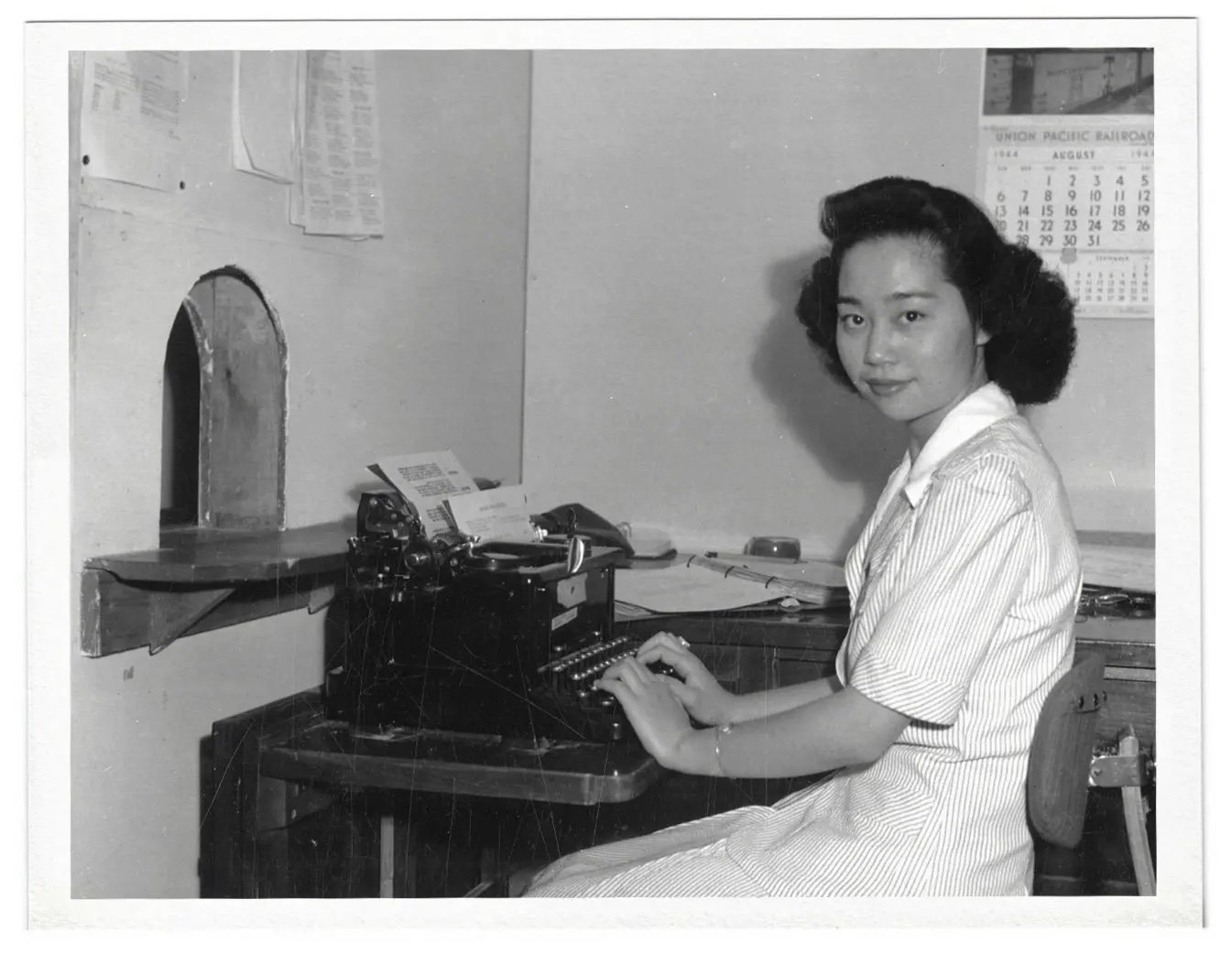Resettlement
Saburo Kido’s Warning
In the throes of internment, Saburo Kido and Teiko Ishida, president and national secretary of the Japanese American Citizens League (JACL), were given a tour of San Francisco in November of 1944. They walked the streets of what had been, merely months prior, the heart of Nihonmachi, with the commander of the Western Defense Command Major Charles Boonesteel.
Trailing the commander through Post and Buchanan, across Sutter and Laguna streets, Saburo Kido couldn’t miss the dramatic change before his eyes. He wrote and published an official report of the visit, highlighting four problems for Japanese Americans upon return from incarceration: housing, jobs, opposition from labor unions, and relations with African Americans. The biggest change to Japantown, Kido noted, was caused by the migration of African Americans to the city during the war. “The [Blacks] have undoubtedly taken over” he warned. Not only were 35% of African Amiercans living in Japanese-owned property, Kido worried that African Americans “have not seen any person of Japanese parentage to date. Their minds may be poisoned by the Hearst newspaper and other types of propaganda. Since they occupy the former Japanese residential district, they will resent being displaced by returning evacuees.”
The JACL along with other official organizations involved in resettlement adopted an official stance of dispersal, encouraging Japanese Americans to assimilate into mainstream America in new cities and counties across the US, rather than reestablishing “Little Tokyos” and “Little Osakas'' that made for easy targets of racism. The dispersal policy overlooked the culture and community that would be lost to assimilation, but was that favorable to whipping up new racial tensions? Would Nihonmachi ever be home again?
Japanese American Anti-Axis Committee members testify before the Tolan Committee, March 6, 1942. Courtesy of Los Angeles Times photographic archive, Department of Special Collections, Charles E. Young Research Library, UCLA
War Relocation Authority personnel at Amache (Granada) concentration camp, c. 1943. Courtesy of Densho, the George Ochikubo Collection
Coming Home
On December 18, 1944, the Supreme Court ruled in the case of Ex parte Endo that the government had no authority to hold American citizens without charge. On January 2nd 1945, the army lifted its West Coast exclusion orders,* and Japanese Americans were free to return to the Pacific Coast.
*About a quarter of the confined Issei and Nisei had been able to leave the camps under a parole system and resettle in the East and Midwest during 1943 and 1944.
Given the camps’ conditions, one might have expected internees to leave as soon as possible. However, in the early days of 1945, Pacific Citizen reported that “only a few” Japanese Americans had left the relocation centers for their former homes on the West Coast. In the first few months, the resettlement process was slow to get going: the War Relocation Authority (WRA) documented 25 acts of violence against returning Japanese between January and March—14 of which occurred in San Francisco.
Mitsuye Endo was a plaintiff in the landmark lawsuit that ultimately led to the closing of the concentration camps and the return of Japanese Americans to the West Coast in 1945. Courtesy of the Utah State Historical Society.
The WRA, the American Friends Service Committee, and local civic groups organized to support the difficult and painful process. “Returning to Harlem” protagonist Daisy Satoda’s sister, Kaye Satoda, had left the camp early to work in the WRA offices in San Francisco. Despite reports reaching Topaz every week of the confounding housing and employment situation in the Bay, Kaye convinced the family to finally leave Topaz for San Francisco in August 1945. She received Daisy and her sisters at the Ferry Building and brought them straight to the Buddhist Church on Pine Street, which had been converted to a temporary hostel for returnees.
Former evacuees held conflicting feelings about returning to the communities from which they’d been forcibly uprooted. But, despite Kido’s warnings, many former Japantown residents returned to their homes. People began arriving in greater numbers after the summer and, within the next year, approximately 2,500 Japanese resettled in San Francisco—nearly half of the pre-war population—to rebuild their lives, businesses, and community organizations.
In addition to the post-war housing shortage in the Bay, finding jobs was an equally daunting task for returnees. WRA job counselors were told that employees would never accept working alongside a “Jap” (an argument eerily similar to that heard just three years earlier about Black workers in defense industries). As older Issei found it impossible to restart their pre-internment businesses, many took work as gardeners and domestic servants. Other Nikkei found work as window washers, seamstresses, and house cleaners. A handful of small businesses, such as the Sugaya family’s Pine Street Laundry, Honnami Taieido art goods store (whose possessions had been safeguarded and returned by their African American landlord), the Uoki Sakai market, and the Benkyo-do confectionery were reestablished.
Within two years, the population was back to its old size and a new Japantown was centered at Post and Buchanan; but, it was smaller, with 150 instead of 400 Japanese-American owned businesses, and most of the residents were newcomers to the neighborhood.
In a Highly Racialized America: Two Communities Under One Roof
Come summer 1945, Kido’s fears about racial friction were largely unfounded. It’s true that the Fillmore to which Japanese Americans were returning was drastically different from the one they had left: the street’s famed arches had been melted down for scrap iron during the war; the old Victorians were strained to the breaking point of overcrowding; the nightclubs and bars now hopped and swayed to an unfamiliar new sound. Some returnees held racist attitudes, but these which went largely unexpressed. Other returnees were wary of their new neighbors, but simply wanted to avoid conflict and resume their lives.
While some Black Americans shared society’s negative views of the Japanese (the NAACP had taken only a lukewarm stance against internment) there were also many instances of the Black community’s kindness towards Japanese Americans upon their return: A Black landlord saved Honnami Taieido’s stock during internment, allowing the family to reopen their art goods store; a Black minister enthusiastically invited returnees to join his church in San Francisco; in Oakland, Black neighbors were among the first to welcome back a returning dentist and his wife; a number of Black families took Japanese Americans into their homes, or had stored their belongings.
Toshi Koba, a young social worker who, even during her internment at Topaz, had spent three years serving on the camp’s ad hoc Community Activities Department, returned to San Francisco to find that the buildings which used to house her beloved community organizations were being used by newcomers: the Booker T Washington Center had taken up offices in the vacated Kinmon Gakuen, the American Friends Service Committee was leasing the beautifully designed, Japanese-style YWCA building, and the YMCA was inhabited by the Black USO.
While many worried that these “takeovers” would drive tension, these organizations quickly transitioned into shared spaces. In the summer of 1945, the Booker T Center, which had used the facility to store and protect many families’ possessions while they were incarcerated, invited Japanese Americans and African Americans to a discussion-based event entitled “Test of Democracy,” to reflect on the “strains and gains” of coexisting in the Western Addition. Similarly, the YMCA and YWCA joined forces to run a joint neighborhood program, feeling that a “provision must be made for [Black] participation lest the Japanese be accused of doing what they have accused other branches of the Y, i.e. practice discrimination.”
Implicitly, these organizations called for the Western Addition’s two predominant communities of color–who shared different but parallel experiences of racialization and displacement–to seek unity. Toshi understood the need for solidarity, accepting a position at the Booker T Washington Center, where she would serve both Black and Japanese American youth in her community for the next three decades.
Although tension over resources such as housing and jobs was probably not uncommon, those post-war years were recalled by many as a thriving, polyglot era. Now-board President of San Francisco’s JACL chapter Judy Hamaguchi has described 1950s Nihonmachi as a “great neighborhood for a child to grow up,” despite cramped living conditions in a Victorian apartment on Post Street. She fondly remembers many nights when Jim Edwards, owner of Jimbo’s Bop City and her family’s next-door neighbor, would escort her and her infant brother across the street to where their mother worked as a waitress.
A Japanese-American wedding reception in Jackson’s Nook nightclub reflects the diversity of the neighborhood. Early 1950s. (Red Powell/Reggie Pettus Collection)
I had a mixed group of friends. Japanese. Filipino. Black. Mixed, like the neighborhood. We had the J-town walk. The J-town feel. When we got down to the Fillmore, we’d check everyone out and they’d check us out, because you had to know who your rivals were. The Fillmore was tough, but happenin’.
—Steve Nakajo
Completed in 1932, the Japanese YWCA/Issei Women’s Building at 1830 Sutter Street was designed by master architect Julia Morgan. Photo courtesy of Karen Kai.
1690 Post
When Hatsuto Yamada returned to San Francisco from Topaz, finding the former locale of Nippon Drugs home to a Black-owned jazz club, he opened a new drugstore two blocks away at 1698 Sutter. He renamed his new store Jim’s Drug Company, after the Anglicized “James” that he began calling himself after the war—ironically similar to the new namesake of his old shop, "Jimbo's."
Mr. Yamada at Jim's Drug Company, 1945. Courtesy of UC Berkeley, Bancroft Library.
Want to Learn More?
Judy Hamaguchi, “Japantown, The Way We Were.” Nikkei Heritage, v. XII, no. 4 (Fall 2000/Winter 2001).
Starting Over: Japanese Americans After the War, a film by Dianne Fukami
“Resettlement” Densho Encyclopedia
Dempster, Brian Komei, ed. ' Making Home from War: Stories of Japanese American Exile and Resettlement . Berkeley, CA: Heydey Books, 2010.







